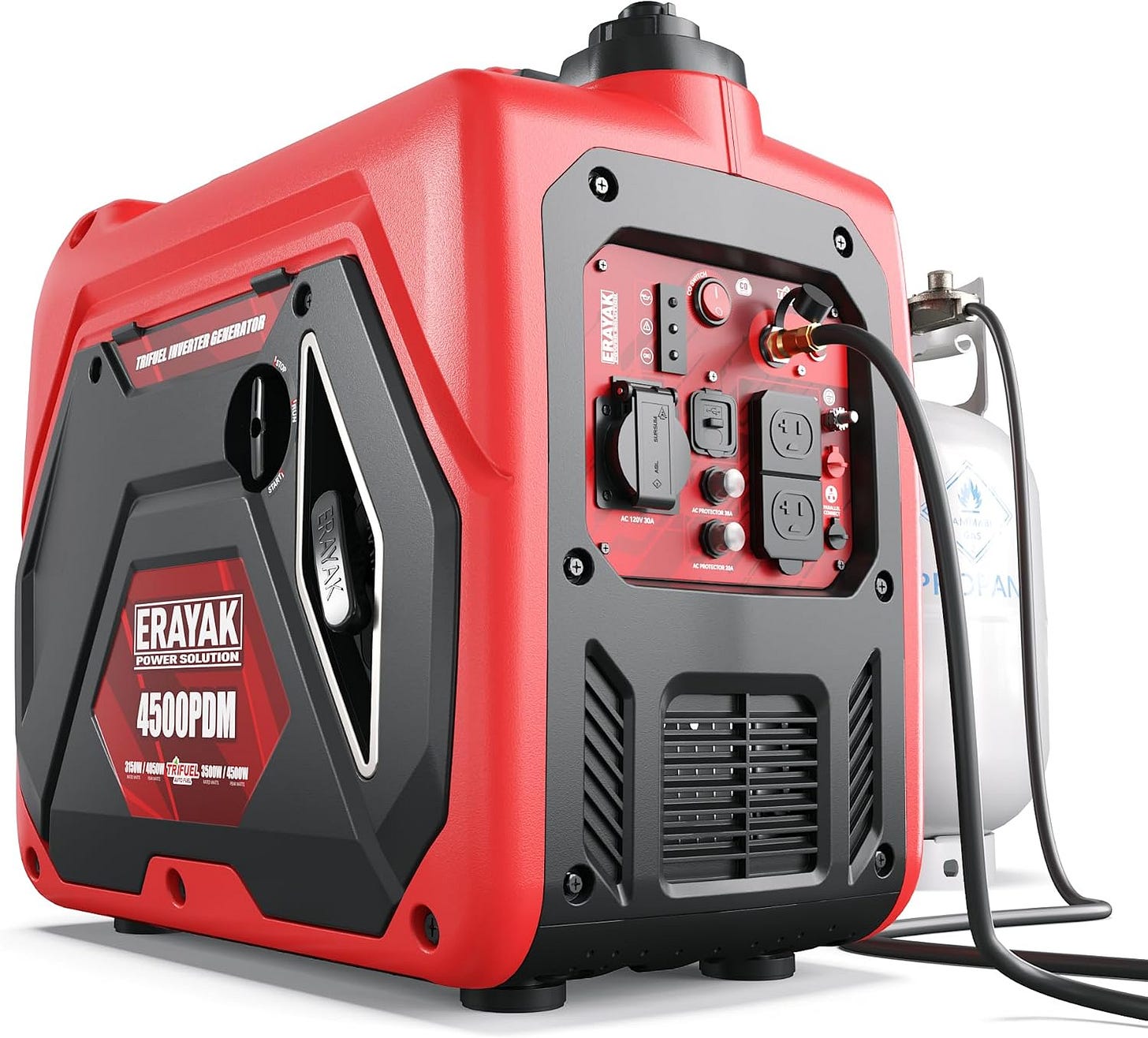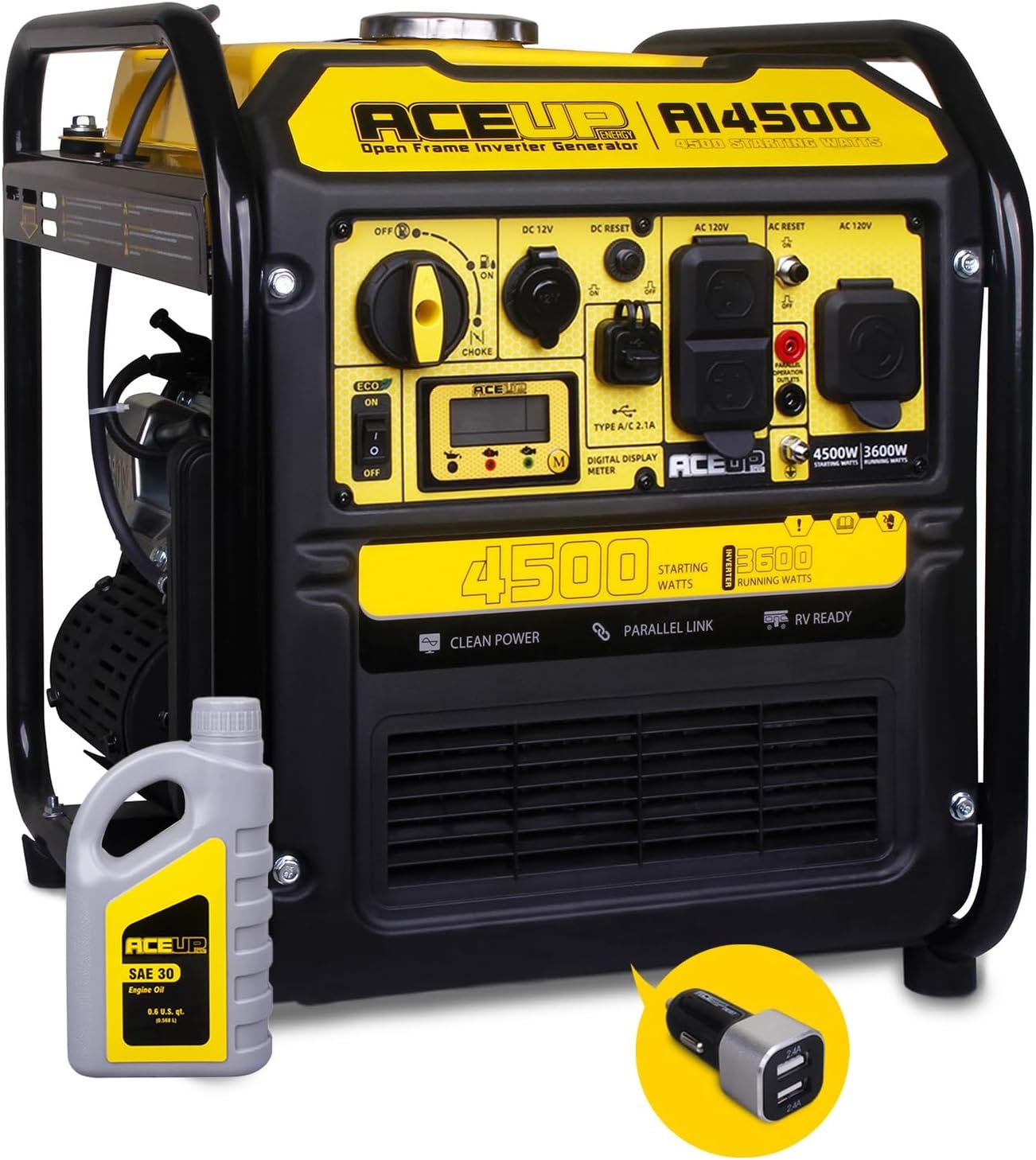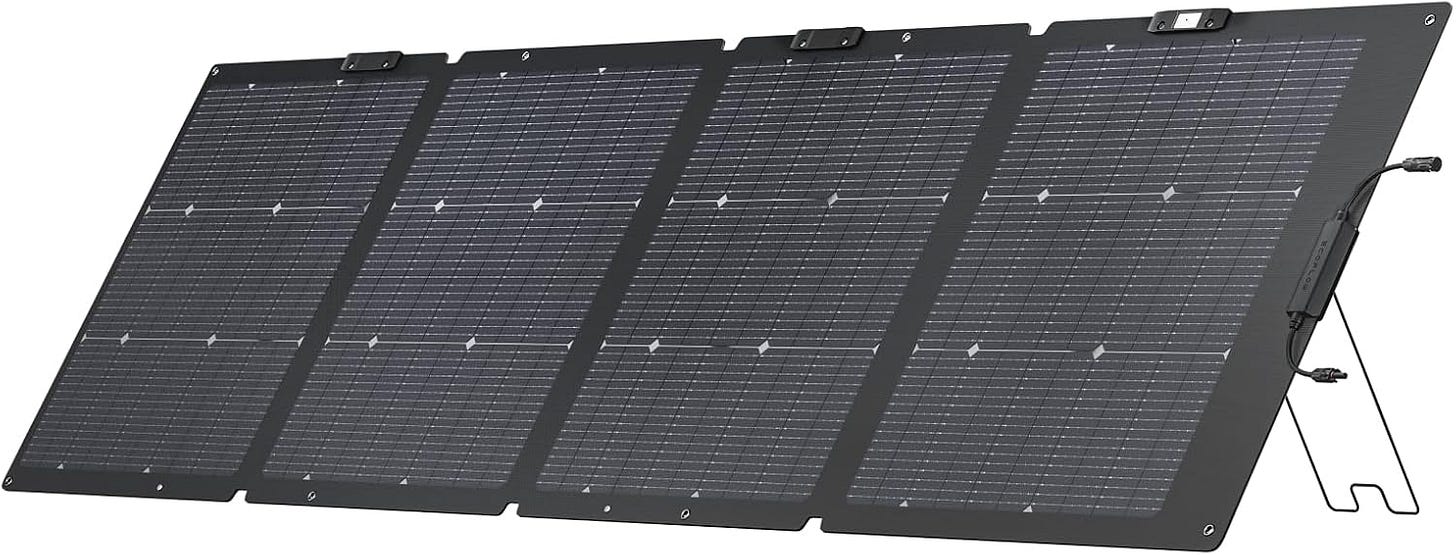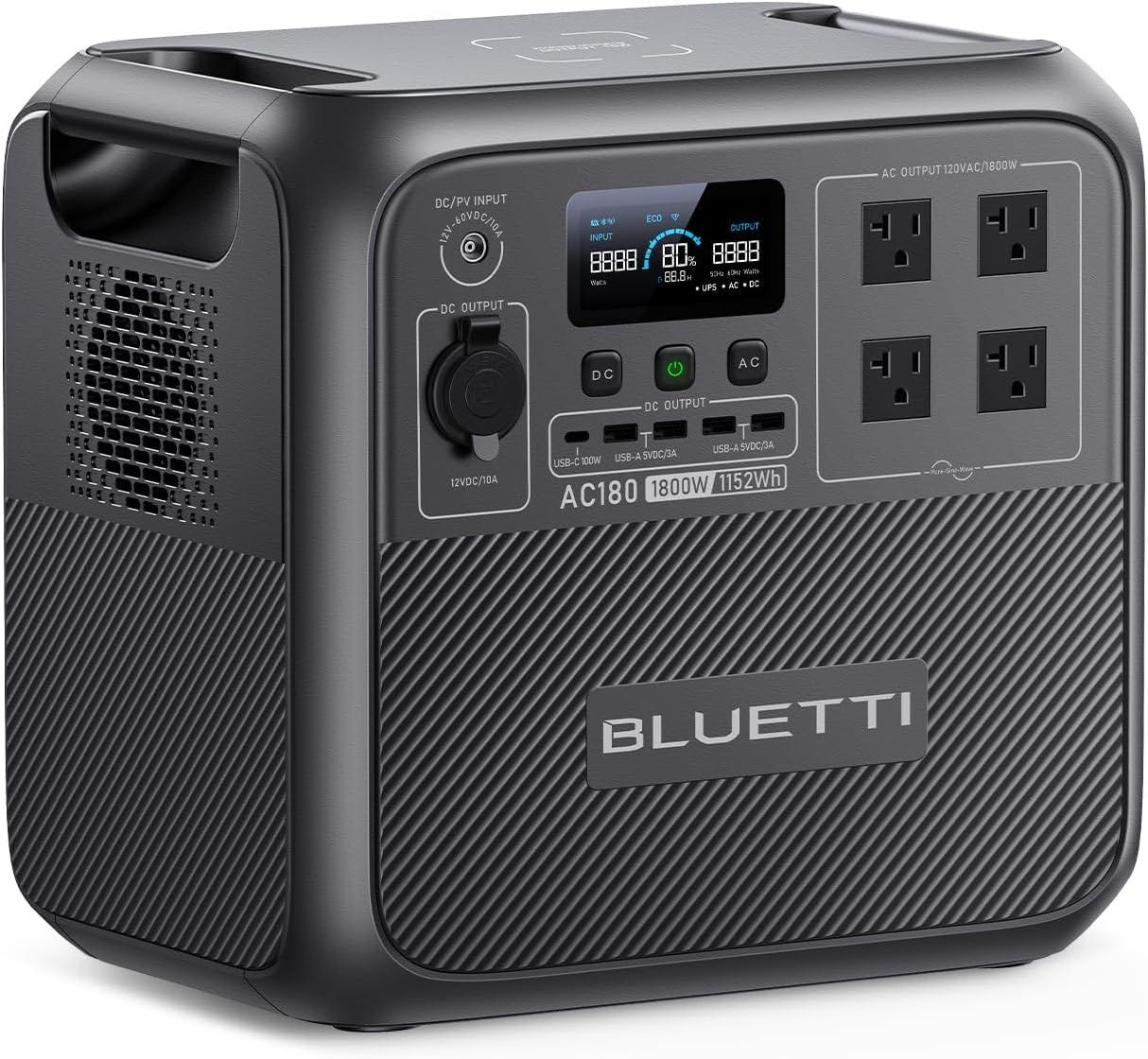When disaster strikes, whether it’s a hurricane, earthquake, or prolonged grid failure, access to reliable power can be a lifeline.
From keeping medical devices running to powering communication tools, refrigeration, or lighting, having a robust power solution is critical for emergency preparedness.
This guide explores various power options;gas and diesel generators, fixed and portable solar solutions, battery packs, and more;detailing their pros, cons, and recommended products.
We’ll conclude with a buyer’s guide to help you choose the right solution for scenarios like off-grid living or urban disasters.
Gas and Diesel Generators
Gas and diesel generators are traditional go-to options for backup power, capable of delivering substantial electricity to run household appliances, tools, or even entire homes.
Pros
High Power Output: Can power heavy appliances like refrigerators, HVAC systems, and power tools, with outputs ranging from 2,000 to 15,000 watts or more.
Reliability: Provides consistent power as long as fuel is available, making them ideal for short-term outages.
Widely Available: Easily found in hardware stores, with a range of sizes and price points.
Cons
Fuel Dependency: Requires a steady supply of gasoline or diesel, which may be scarce during extended crises. Fuel storage also poses safety risks.
Noise and Emissions: These generators are noisy and emit carbon monoxide, requiring outdoor operation in well-ventilated areas to avoid health hazards.
Maintenance: Regular maintenance is needed to prevent issues like clogged fuel lines or degraded components, especially if stored for long periods.
Recommended Products
ERAYAK 4500W Dual-Fuel Portable Inverter Generator for Home Use, Camping Outdoor: 30A RV Ready, Auto Switch, Gas and Propane Powered, EPA, CO Sensor, Parallel Ready, Campact Design. Ideal for whole-home backup during short-term outages.
Aceup Energy 4500 Watt Inverter Generator 223CC, Gas Powered Generator for Camping, Home Use. great for powering essential appliances during urban disasters.
Here is a more comprehensive list of recommended Outdoor Generators.
Fixed Solar Solutions
Fixed solar systems, typically installed on rooftops with battery storage, provide a sustainable, long-term power solution for homes, especially in disaster-prone areas.
Pros
Sustainability: Harnesses renewable solar energy, reducing reliance on fuel and minimizing environmental impact.
Disaster Resilience: With battery backup, these systems can power critical appliances during grid outages, operating independently.
Long-Term Cost Savings: After initial investment, operational costs are low, and systems can last 25+ years. Tax credits may offset installation costs.
Cons
High Upfront Cost: Installation, including panels, inverters, and batteries, can cost $10,000–$30,000, depending on system size.
Weather Dependency: Power generation is reduced during cloudy days or at night unless paired with sufficient battery storage.
Grid-Tied Limitations: Standard grid-tied systems may shut down during outages for safety unless equipped with a battery and inverter for islanding.
Recommended Products
Renogy 400 Watt Solar Panel Kit ($569): A starter kit for fixed solar setups, including four 100W panels and a charge controller. Pair with a battery for off-grid use.
EcoFlow Smart Home Panel ($399): Integrates with solar systems to manage home circuits during outages, ideal for urban disaster preparedness.
Portable Solar Generators
Portable solar generators combine solar panels with a battery and inverter, offering a clean, quiet alternative for emergency power.
Pros
Portability: Lightweight and easy to move, perfect for camping, RV use, or evacuations.
Clean and Safe: Emission-free and safe for indoor use, eliminating risks of carbon monoxide poisoning.
Renewable Charging: Can be recharged via solar panels, wall outlets, or car chargers, ensuring power availability if sunlight is present.
Cons
Limited Capacity: Typically ranges from 500–3,600 watt-hours, suitable for small appliances but not whole-home backup.
Slow Recharge Times: Solar charging can take 4–10 hours, depending on panel size and sunlight conditions.
Cost: Higher per-watt cost compared to gas generators, with premium models exceeding $1,000.
Recommended Products
Jackery Explorer 2000 Plus A 2,042Wh generator with expandable capacity up to 24kWh, capable of powering a fridge or router for hours.
EcoFlow Delta Pro ($3,699): A 3,600Wh powerhouse with fast solar charging and home integration, ideal for emergencies.
Battery Packs and Power Stations
Standalone battery packs or power stations store energy from the grid, solar panels, or other sources, offering versatile backup power.
Pros
Versatility: Can be charged via multiple sources (solar, AC, car) and used for small devices or appliances.
Quiet Operation: No noise or fumes, making them ideal for indoor use during urban disasters.
Compact Size: Small units are perfect for charging phones, laptops, or medical devices during evacuations.
Cons
Limited Runtime: Smaller units (250–1,000Wh) may only power devices for a few hours, requiring frequent recharging.
Expensive for Capacity: High-capacity models are costly, and additional batteries add to the expense.
No Generation: Unlike generators, they rely on pre-stored energy, so you need a charging source.
Recommended Products
Anker SOLIX C1000 ($999): A 1,056Wh power station with fast charging and multiple ports, great for small electronics.
BLUETTI AC180 ($999): A 1,152Wh station with 1,800W output, suitable for powering a mini-fridge or CPAP machine.
Other Power Solutions
Manual Crank Generators
These devices generate power through physical effort, typically for small electronics like radios or phones.
Pros: No fuel or sunlight needed; reliable in any condition.
Cons: Low output (5–20 watts); labor-intensive and impractical for sustained use.
Recommended Product: K-TOR Pocket Socket 2 ($65): A hand-crank generator for charging USB devices.
Thermoelectric Generators
These use heat (e.g., from a fire) to generate electricity, often for small devices.
Pros: Works in any weather; uses available heat sources.
Cons: Low power output; requires constant heat source.
Recommended Product: Limited options on Amazon; consider specialized retailers like BioLite.
Hybrid Solar-Diesel Systems
These combine solar panels with a diesel generator for continuous power, often used in remote or critical applications.
Pros: Reduces fuel use; provides power during low sunlight.
Cons: Complex setup; still requires fuel and maintenance.
Recommended Product: Custom solutions; consult a solar installer.
Buyer’s Guide: Choosing the Right Power Solution
Selecting the right power solution depends on your specific needs, location, and disaster scenario.
Here’s a breakdown to guide your decision:
1. Assess Your Power Needs
Calculate Wattage: List critical devices (e.g., fridge: 400W, CPAP: 40W, lights: 60W) and their runtime. Multiply watts by hours to estimate watt-hours (Wh) needed. For example, a 400W fridge running 9 hours needs 3,600Wh.
Prioritize Essentials: Focus on life-sustaining devices (medical equipment, refrigeration) and communication tools (phones, radios).
2. Consider Your Scenario
Off-Grid Living:
Best Choice: Fixed solar system with battery storage or hybrid solar-diesel system.
Why: Provides long-term, sustainable power with minimal fuel dependency. Pair with a high-capacity battery (e.g., EcoFlow Smart Home Panel) for nighttime use.
Example: A fixed solar system with 10kWh battery storage can power a small cabin’s essentials for days, recharging daily via sunlight.
Urban Disasters:
Best Choice: Portable solar generator or gas generator.
Why: Portability is key for evacuations, and gas generators offer high output for short-term outages. Solar generators like the Jackery Explorer 2000 Plus are safe indoors and versatile.
Example: In a city blackout, a 2,000Wh solar generator can keep a fridge, lights, and phones running for 1–2 days.
3. Evaluate Constraints
Budget
Gas generators are cheaper upfront ($500–$1,500), but solar solutions save money long-term. Battery packs range from $200–$4,000 based on capacity.
Space
Fixed solar requires roof or ground space; portable options are better for apartments.
Fuel Access
In prolonged crises, fuel may be unavailable, making solar or battery solutions more reliable.
Weather
Solar systems need sunlight; gas or crank generators work in any condition.
4. Key Features to Look For
Capacity and Output
Ensure the system meets your watt-hour and peak wattage needs (e.g., surge power for starting appliances).
Charging Options
Solar generators should support solar, AC, and car charging for flexibility.
Portability
Look for wheels or handles on heavier units (e.g., Jackery 3000 Pro).
Safety
Choose LiFePO4 batteries for longevity and safety; ensure gas generators have CO shutoff features.
Expandability
Some solar generators (e.g., EcoFlow Delta Pro) allow additional batteries for increased capacity.
5. Practical Tips
Test Your System
Run your generator or power station periodically to ensure functionality.
Store Safely
Keep gas generators in ventilated areas; store batteries in cool, dry places.
Stock Fuel or Panels
Maintain 5–10 gallons of stabilized fuel for gas generators or extra solar panels for cloudy days.
Plan for Redundancy
Combine solutions (e.g., solar generator + crank charger) for maximum resilience.
Conclusion
Power preparedness is about matching your needs to the right tools.
Gas and diesel generators offer raw power for short-term emergencies but rely on fuel and maintenance.
Fixed solar systems provide sustainable, long-term solutions for off-grid living, while portable solar generators and battery packs balance versatility and eco-friendliness for urban disasters.
By assessing your wattage needs, budget, and scenario, you can build a resilient power plan.
Start small with a portable unit like the Jackery Explorer 2000 Plus or go all-in with a fixed solar setup—either way, you’ll be ready when the grid goes down.
Stay powered, stay prepared.













